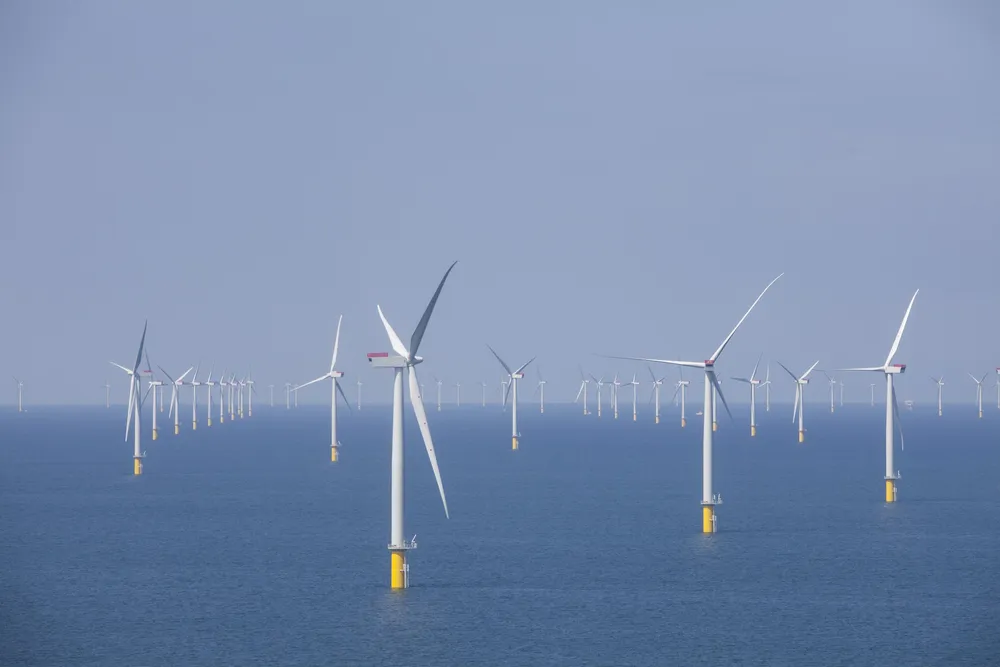Mega projects can provide the answer to offshore wind's problems, UK innovation leaders say
Mega projects could provide the answer for a UK government that needs to build out more wind power, create jobs and cut bills, argues ORE Catapult

As the offshore wind industry struggles to fulfil its promise of providing power that is cheaper as well as cleaner, an influential study in the UK has suggested that a shift toward mega-scale projects could provide answers
ORE Catapult, a UK innovation centre for offshore renewable energy, made a comparison of five "standard" 3GW offshore wind projects against a single 15GW project which — though potentially consisting of multiple lease areas — would be supplied through a centralised onshore manufacturing, logistics and servicing hub.
Apart from their sheer size, the mega projects were defined by their ability to bring together multiple players behind the same goals.
In the UK context, the ORE Catapult study suggested that offtake allocation from mega projects could be coordinated with the current Contracts for Difference (CfD) scheme whereby offtake is allocated annually.
The study suggested that a separate CfD round for mega projects could be held every three to five years, each targeting delivery of 15GW of offshore wind within specific geographic areas.
Cost reductions
The study found that these 15GW allocations could further the development of offshore wind while achieving significant cost reductions.
These included a 14% fall in capital costs and a 15% reduction in operational costs over a 25-year period.
Development costs, including surveying, were shown falling 60% when pooled into a single project.
On its overall comparison with the five standard offshore wind projects, the report estimated that the mega project would achieve a total £10.8bn ($14.6bn) reduction in costs over the 25-year generation period.
Cost savings included logistics — with offshore assets closer to manufacturing, fabricating and marshalling locations — increased bargaining power from larger scale procurement, fewer on-off vessel mobilisations, higher procurement volumes, port investment and centralised operations and maintenance (O&M) and longer-term horizons for knowledge-building and skills.
To some extent, the basic premise of the ORE Catapult study may seem counter-intuitive.
Some offshore wind industry stars such as Orsted have been focusing on divestment rather than investment after a string of financial hits on projects, most notably in the US.
But ORE Catapult argued that mega projects have proved successful in other industries, and "could be transformative to the offshore wind sector."
The report noted that such projects offer increased certainty for large-scale deployment, making supply chain and infrastructure investment easier to justify.
"They provide commercial stability over a long timeframe, encouraging investments and boosting local content, while maintaining 100% private funding backed by custom CfDs that can be awarded using established government powers," it argued.
ORE Catapult acknowledged that mega projects could be more costly on a weighted average cost of capital (WACC) measure, due to greater concentration of risk and need for a wider diversity of lenders.
However, an evolution of the financing environment in response to mega projects could offset this negative impact, it added.
Where are the UK factories?
The ORE Catapult report suggested that the CfD scheme may have been successful in fostering the deployment of offshore wind projects in the UK, but it has been less so in terms of supporting the growth of manufacturing, as well as jobs and export potential.
"We have taken an enormous, long-term commercial opportunity and executed it via dozens of uncoordinated contracts that have proved to have neither the scale, nor the lead-time to justify major investments in UK manufacturing capacity at the scale that we see in comparable industries such as aerospace or automotive," the report stated.
The report made an analogy with the approach to big nuclear facilities in the UK, where "Custom" CfDs are awarded for mega projects.
This "would allow the government to negotiate directly with consortia of project developers on terms such as phasing of commissioning and UK supply chain support," it stated.
"Government and the successful developer (or consortium) would be able to collaborate and coordinate on measures to ease supply chain bottlenecks, with a level of certainty over the (developer’s) procurement strategy that is impossible under the current approach," it stated.
"This could be critical for avoiding turbine component manufacturing bottlenecks that threaten to spike the cost of achieving offshore wind targets."
Finally, ORE Catapult argued that the improved economics for the mega projects should allow for lower CfD bids compared to the standard configuration of offshore wind farms, leading to lower CfD top-up payments to the asset owners and, ultimately, a reduction in consumer bills.
The analysis suggested that the difference in CfD bid price could be £12 per MWh lower in 2025 terms.
In its conclusions, the ORE Catapult report suggested that adding a single mega project to the offshore wind pipeline would help put the UK firmly on track for its targets.
"A hoped-for 5GW annually from CfD rounds, supplemented by a mega project taking its final investment decision before 2030, and being constructed over perhaps five years, would strengthen the prospects for having 60GW operating or under construction by the early 2030s," it stated.
(Copyright)